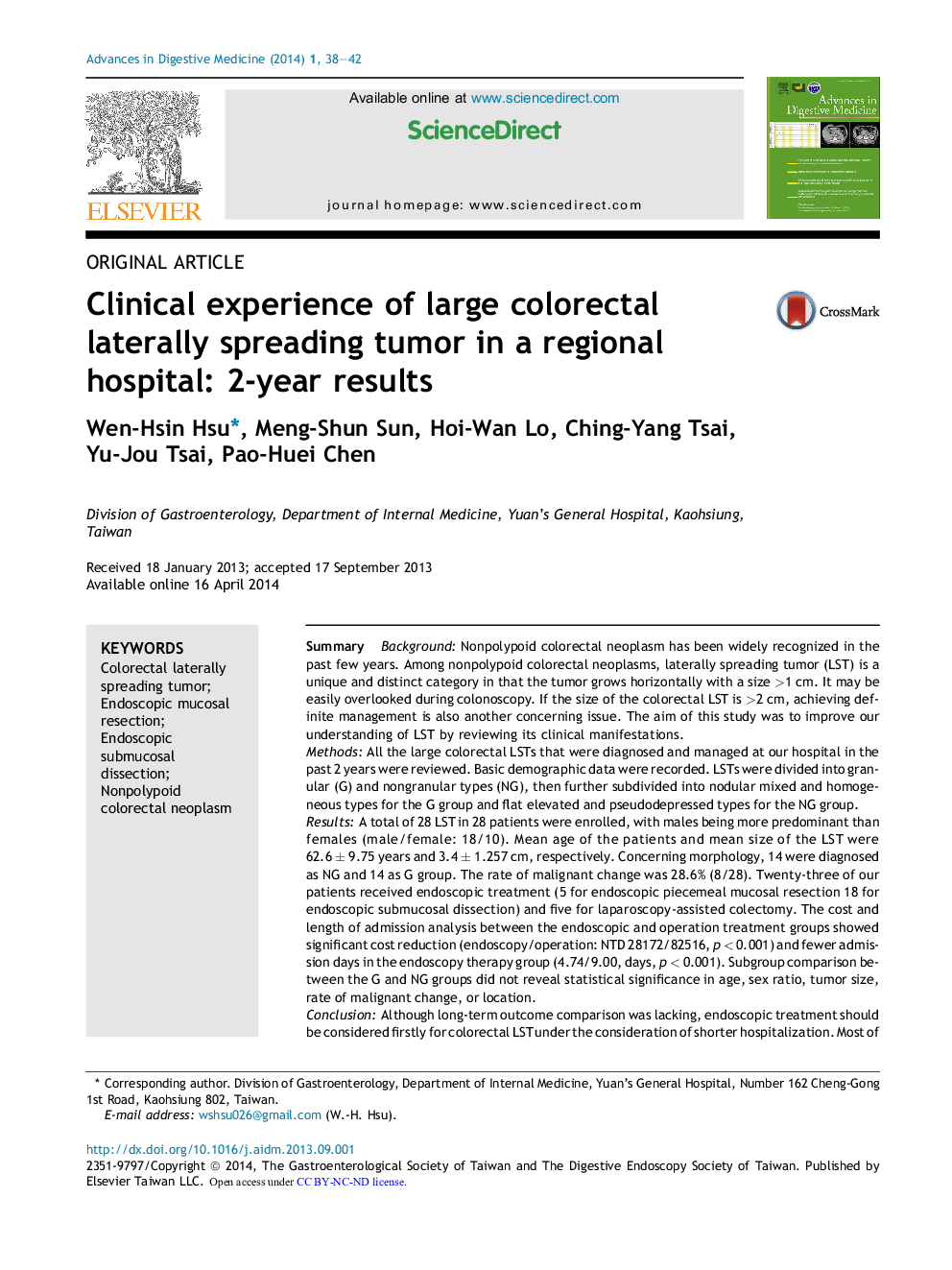| Article ID | Journal | Published Year | Pages | File Type |
|---|---|---|---|---|
| 3278588 | Advances in Digestive Medicine | 2014 | 5 Pages |
SummaryBackgroundNonpolypoid colorectal neoplasm has been widely recognized in the past few years. Among nonpolypoid colorectal neoplasms, laterally spreading tumor (LST) is a unique and distinct category in that the tumor grows horizontally with a size >1 cm. It may be easily overlooked during colonoscopy. If the size of the colorectal LST is >2 cm, achieving definite management is also another concerning issue. The aim of this study was to improve our understanding of LST by reviewing its clinical manifestations.MethodsAll the large colorectal LSTs that were diagnosed and managed at our hospital in the past 2 years were reviewed. Basic demographic data were recorded. LSTs were divided into granular (G) and nongranular types (NG), then further subdivided into nodular mixed and homogeneous types for the G group and flat elevated and pseudodepressed types for the NG group.ResultsA total of 28 LST in 28 patients were enrolled, with males being more predominant than females (male/female: 18/10). Mean age of the patients and mean size of the LST were 62.6 ± 9.75 years and 3.4 ± 1.257 cm, respectively. Concerning morphology, 14 were diagnosed as NG and 14 as G group. The rate of malignant change was 28.6% (8/28). Twenty-three of our patients received endoscopic treatment (5 for endoscopic piecemeal mucosal resection 18 for endoscopic submucosal dissection) and five for laparoscopy-assisted colectomy. The cost and length of admission analysis between the endoscopic and operation treatment groups showed significant cost reduction (endoscopy/operation: NTD 28172/82516, p < 0.001) and fewer admission days in the endoscopy therapy group (4.74/9.00, days, p < 0.001). Subgroup comparison between the G and NG groups did not reveal statistical significance in age, sex ratio, tumor size, rate of malignant change, or location.ConclusionAlthough long-term outcome comparison was lacking, endoscopic treatment should be considered firstly for colorectal LST under the consideration of shorter hospitalization. Most of our analyses between the G and NG groups were statistically insignificant, which is likely to be due to the small population base.
